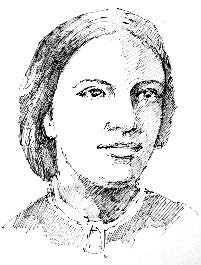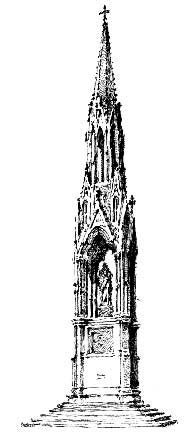Cambridgeshire
THE MOST BEAUTIFUL MILE IN THE WORLD
∗ CAMBRIDGE SCIENCE ∗ SPIES ∗ FOOTLIGHTS ∗ BOOKS ∗ CHIMES ∗ BOAT RACE ∗ PEAS PLEASE
The Cambridge Bridge of Sighs, inspired by the bridge in Venice over which condemned prisoners were led to their deaths.
CAMBRIDGESHIRE FOLK
Octavia Hill ∗ Thomas Clarkson ∗ Sir John Berry ∗ John Maynard Keynes ∗ Michael Ramsay ∗ Sir Christopher Cockerell ∗ Ronald Searle ∗ Sir Richard Attenborough ∗ Olivia Newton-John
Cambridge
CAMBRIDGE UNIVERSITY was established at the beginning of the 13th century by scholars fleeing from Oxford, where the students were in dispute with the townsfolk. It is THE SECOND OLDEST UNIVERSITY IN THE ENGLISH-SPEAKING WORLD, and the first Cambridge college, PETERHOUSE, was founded in 1284.
The stretch of river at Cambridge known as the ‘BACKS’, where the backs of the colleges run down to the river, has been described as ‘the most beautiful mile in the world’. One of the buildings to be seen from the Backs is KING’S COLLEGE CHAPEL, begun by Henry VI, completed by Henry VII and considered by many people to be ‘the most beautiful building in the world’. Under its matchless roof of fan vaulting England’s most famous choir sings, and those who wish to attend the traditional Christmas carol service here often have to queue outside overnight.
Cambridge Science
FRANCIS BACON and ISAAC NEWTON, pioneers of modern scientific thought, studied at Cambridge. THE CAVENDISH LABORATORY is named after the 18th-century scientist HENRY CAVENDISH, who discovered hydrogen and measured the weight of the Earth. Here, in 1897, PROFESSOR J.J. THOMPSON discovered the electron – the particle that makes up the atom, which was previously believed to be the smallest structure known. In 1952 the structure of DNA was discovered in the laboratory by JAMES WATSON and FRANCIS CRICK. This discovery has led, amongst other things, to forensic testing (pioneered at the O.J. Simpson trial) and cloning (Dolly the sheep).
Cambridge Spies
Cambridge idealism, allied to a degree of arrogance, could sometimes lead to unfortunate consequences, as in the case of the Cambridge spy ring of the 1930s, whose members were motivated by the belief that capitalism was corrupt and communism offered a better social model. PHILBY, BURGESS and MACLEAN were all recruited as spies by ANTHONY BLUNT while they were studying at Cambridge, as was a fifth man, JOHN CAIRNCROSS, whose identity was not revealed until 1990. Cairncross’s activity was particularly damaging, as he leaked details of the code-cracking work going on at Bletchley Park during the Second World War, which allowed the Russians to change their own codes before they were broken. He also gave away information about the atomic weapons research being pursued by the British and Americans, which the Soviets then used to set up their own nuclear programme.
Cambridge Footlights
Since it was set up in 1883 the Cambridge Footlights has been at the cutting edge of English comedy. In the 1920s and 30s the Footlights produced a wave of performers who went on to shine in the professional theatre, such as JACK HULBERT, JIMMY EDWARDS and RICHARD MURDOCH. From the 1950s came JONATHAN MILLER, PETER COOK and DAVID FROST. Two of THE GOODIES, BILL ODDIE and TIM BROOKE-TAYLOR, and three of the original MONTY PYTHON team, JOHN CLEESE, GRAHAM CHAPMAN and ERIC IDLE, learnt their trade in the Footlights, as did STEPHEN FRY, HUGH LAURIE, GRIFF RHYS JONES, EMMA THOMPSON and TONY SLATTERY. The first woman member was ELEANOR BRON in 1959.
Eleanor Bron
Cambridge Books
The CAMBRIDGE UNIVERSITY PRESS is THE OLDEST PRINTING AND PUBLISHING HOUSE IN THE WORLD, and stands on the site of BRITAIN’S OLDEST BOOKSHOP – books have been sold on this spot since 1581.
Cambridge Chimes
In 1793 a new clock was installed in the tower of GREAT ST MARY’S CHURCH, which stands in the centre of Cambridge between King’s College Chapel and the market place, and Regius Professor of Civil Law, THE REVD DR JOSEPH JOWETT, was asked to compose a chime for it. His composition, possibly inspired by the fifth bar of the opening of Handel’s aria ‘I Know that My Redeemer Liveth’, proved popular and was adopted in 1859 for the new Great Clock of Westminster, more widely known as Big Ben – with the result that the simple tune first heard in Cambridge is now the most famous clock chime in the world.
The Boat Race
In 1829 Cambridge University challenged Oxford University to a boat race and this took place on the River Thames at Henley. Oxford, wearing their dark blue shirts, won. The next race was run in 1836 from Westminster to Putney, and this time Cambridge, wearing light blue shirts, triumphed.
Since 1856 the race has been staged annually, except during the two world wars, over a 4½-mile (7-km) course between Putney and Mort-lake. To date, Cambridge have won 79 times and Oxford 73. There was one dead heat, in 1877. According to Oxford legend the judge on the finishing line, one ‘Honest’ John Phelps, was asleep under a bush when the crews flashed past, and awoke to declare ‘a dead heat to Oxford by four feet’.
The first woman to take part was SUE BROWN, who coxed Oxford to victory in 1981 and 1982.
Cambridge holds the course record with a time of 16 minutes and 19 seconds, recorded in 1998.
The Boat Race is one of the highlights of the English sporting calendar and some quarter of a million people normally line the riverbank to watch. Boat Race night has been known to be a rowdy occasion.
Peas Please
Anyone who thinks peas are dull should go to WITCHAM, near Ely, in July, when the pretty village hosts the WORLD PEA-SHOOTING CHAMPIONSHIPS, attracting determined competitors from all over the world. There are rounds for target and distance shooting, and a specialist round devoted to hi-tech weaponry such as steam-driven or laser-guided pea-shooters.
Well, I never  knew this
knew this
about
CAMBRIDGESHIRE FOLK
Octavia Hill
1838–1912
OCTAVIA HILL was born in WISBECH in 1838 into a family of reformers. Greatly influenced by both Christian Socialism and the ideals of John Ruskin, she was particularly concerned with decent social housing, and her vision was one of ‘well ordered, quiet little homes behind neat little doors’, rather than huge blocks of soulless, dreary tenements. Ruskin provided the finance for her first project, and the money raised in fair rents was ploughed back into maintaining and increasing the housing stock. In this way she created the template for modern housing associations.
An important feature of Octavia Hill’s vision was the preservation and provision of open spaces, and in 1895 she was one of the co-founders of the National Trust, donating to the Trust one of its first properties, the gardens at Toys Hill in Kent, in 1898.
Thomas Clarkson
1760–1846
The abolition of the slave trade across the world owes more to THOMAS CLARKSON than to almost anyone. He was born in WISBECH, where his clergyman father was headmaster of the grammar school. As a student at Cambridge he entered a competition to write a Latin essay on the subject of whether it was lawful to enslave anyone against their will, and during his research he came across accounts of the slave trade that horrified him. On a trip to London he pondered on what he had learnt, and at a point between Wadesmill and Ware, in Hertfordshire, he got off his horse, sat by the side of the road and resolved to do something to halt the ghastly trade. Today a memorial stands on the very spot where he made that resolution.
His essay won the competition, and he translated it into English to be read by a wider audience. The essay brought him to the attention of anti-slavery campaigner Granville Sharp, and together they set up the Society for the Abolition of the Slave Trade, which included nine prominent Quakers and William Wilberforce, the MP for Hull, who agreed to be their spokesman in the House of Commons.
Clarkson’s job was to go around the slave ports and gather the evidence of cruelty and inhumanity they needed to support the case for abolition. Over a seven-year period he travelled the country inspecting ships in Deptford, Woolwich, Chatham, Sheerness, Portsmouth and Bristol. He just escaped with his life in Liverpool, after being attacked by a party of sailors sent to kill him by the ship owners whose livelihoods he was threatening. Amongst the hardware he collected were branding irons, leg shackles, handcuffs, whips and jaw locks.
After many setbacks Clarkson and his companions achieved their first goal when, in 1807, Parliament passed an ‘ACT FOR THE ABOLITION OF THE SLAVE TRADE’. While this only abolished the slave trade in the British Empire, not slavery itself, it was a start and encouraged Clarkson to continue campaigning throughout Europe and America. Finally, in 1833, an attempt was made in the Slavery Abolition Act to abolish slavery itself, in that the Royal Navy was charged with closing down the trade wherever in the world they came across it.
Clarkson died at Ipswich in Suffolk in 1846 and is buried in the church at Playford, on the outskirts of the town.
Born in Cambridge
SIR JOHN BERRY ‘JACK HOBBS’ (1882–1963), the FIRST ENGLISH CRICKETER TO BE KNIGHTED (the first cricketer was Australian Don Bradman).
JOHN MAYNARD KEYNES (1883–1946), MOST INFLUENTIAL ENGLISH ECONOMIST OF THE 20TH CENTURY and creator of the influential Keynesian economic theory, which advocates government intervention to mitigate the ups and downs of the free market. A founder of the World Bank and the International Monetary Fund (IMF).
Thomas Clarkson’s Monument, Wisbech
MICHAEL RAMSEY (1904–88), 100th Archbishop of Canterbury.
SIR CHRISTOPHER COCKERELL (1910–99), inventor of the hovercraft.
RONALD SEARLE, cartoonist and creator of St Trinian’s, born 1920.
SIR RICHARD ATTENBOROUGH, film actor, producer and director, born 1923. In 1982 he won two Oscars with the film Gandhi, for Best Picture (as producer), and for Best Director.
OLIVIA NEWTON-JOHN, pop singer and star of the film adaptation of Grease, born 1948.


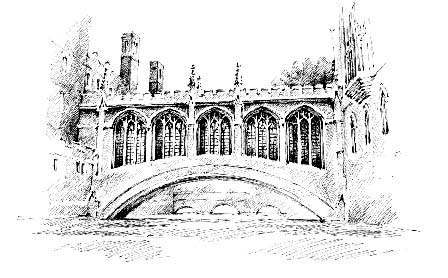


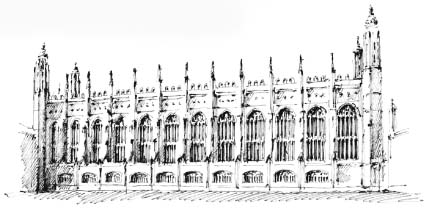


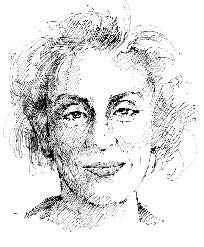




 knew this
knew this